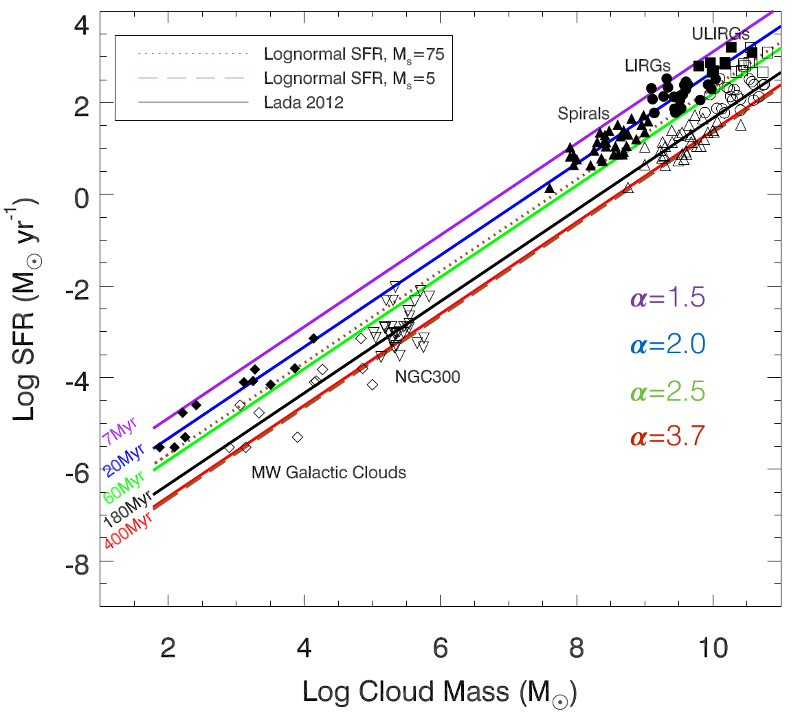
|
EPoS |
|
EPoS Contribution
|
|
The Star Formation Rate in the Gravoturbulent Interstellar Medium
Blakesley Burkhart Harvard CfA, Cambridge, US | |
| We analytically determine the star formation rate (SFR) based on a piecewise power law and lognormal probability distribution function (PDF) of density in giant molecular clouds. This is in contrast to previous analytic SFR models that use purely lognormal density PDFs. Low density gas resides in the lognormal portion of the PDF. Gas becomes gravitationally unstable past a critical density and the PDF begins to forms a power law. As the collapse of the cloud proceeds, the transitional density between the lognormal and power law portions of the PDF moves towards lower-density while the slope of the power law becomes increasingly shallow. The star formation rate per free-fall time is calculated via an integral over the lognormal from the critical density to the transitional density and an integral over the power law from the transitional density to infinity. As the power law slope becomes shallower the SFR increases beyond the expected values calculated from a lognormal density PDF. We show that the star formation efficiency per free fall time in local molecular clouds increases with shallower PDF power law slopes, in agreement with our model. The approach presented here yields star formation rates in good agreement with both local GMCs and extragalactic observations. Our model can explain why star formation is spatially and temporally variable within a cloud and can accelerate and why the depletion times observed in local GMCs and galaxies vary. Including the power law PDF in the SFR calculation can explain both star-bursting and quiescent star-forming systems without the need to invoke extreme variations in the local interstellar environment. | |
 | |
| Caption: The star formation rate vs. cloud mass relationship with local GMCs (green points, from Lada et al. 2010), spiral galaxies (yellow points), LIRGS (purple points), ULIRGS (pink points), LMC and SMC dwarf galaxies (blue points), and individual GMCS from NGC 300 (red points, Faesi et al. 2014). From Burkhart 2018 | |
|
Key publication
Suggested Session: Star formation "laws" and IMF | |